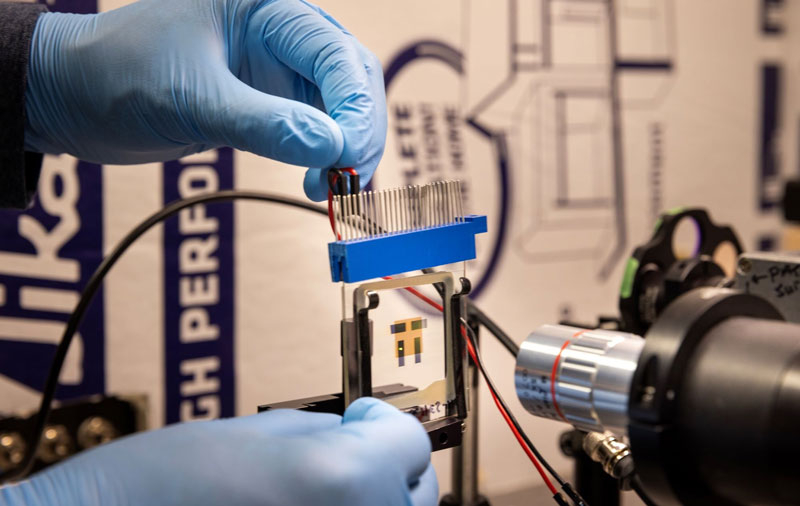Scientists from the United States are closer to creating unique night vision goggles that would not only be compact and lightweight, but also have a memory effect on images. This would allow pre-processing of images by neural networks directly on the glasses, without loading them into the processor. But even without AI, the new development demonstrates how much lighter OLED night vision goggles can be than their current counterparts.

Image source: Marcin Szczepanski, Michigan Engineering
The project is partially funded by DARPA (Defense Advanced Research Projects Agency) and is currently being led by scientists from the University of Michigan. As you know, modern night vision devices (they can be called glasses with a very big stretch) are devices with vacuum devices and a phosphor, which, with significant energy expenditure, convert near-infrared light into electrons and, after amplification, create a monochrome image on a luminous coating.
Scientists from the United States have created a new type of OLED (organic light-emitting diodes) that responds to electrons and excites photons of visible light. The sensor they presented and converter of near-infrared radiation into visible radiation is thinner than a human hair – its thickness is less than 1 micron. It consists of five layers and, ideally, each electron that hits it is converted into five photons.
The first layer of the sensor excites electrons from incident photons of near-infrared light. The electron then travels through five layers of OLED film. Only one generated photon of visible light can reach the human eye, while other photons again excite electrons in the first layer and thus create a positive feedback amplification effect without the usual bulky and high-voltage electron beam amplification devices.
The experimental device has a modest gain of only 100 times. Modern night vision devices are capable of amplifying the signal up to 10 thousand times. The scientists say the design of the OLED sensor can be further optimized, achieving higher gain and therefore higher sensitivity to infrared light. But even now, the lightness and compactness of the new goggle design in terms of efficiency and power savings allows it to be many times superior to commercial night vision devices.
As for the accompanying memory effect of OLED glasses, in a certain sense it will interfere with night vision. However, scientists have already found a use for it in the form of neural networks for image recognition at the glass level without loading it into the processor. This could definitely be useful for computer vision systems, but there is still a lot of work ahead, although the researchers say that it will not be difficult to put the development into production – they took ready-made technologies and simply found a successful combination of them.